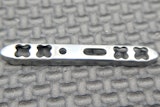If you are reading an article in Manufacturing Business Technology, then there is a good chance that your strategic roadmap includes machine learning for asset maintenance. There is a consensus that machine learning can unlock significant value for manufacturers, by providing plant owners with real-time analysis of an asset’s current performance and the likelihood of degradation and failure.
The challenge for many plant owners is that there is a severe disconnect between the sales collateral of technology vendors and the practicalities of implementing machine learning. For this article, we can put aside system and infrastructure cost because with burgeoning competition the basic rules of economics suggest that machine learning pricing will become more affordable over time.
A second issue that has been an inhibitor of machine learning has been access to a factory’s historian database. Many manufacturing plants simply cannot operationalize the vast amounts of sensor data that is generated by factory machines. One of the biggest contributing factors is that third-party vendors are often the gatekeepers to a factory’s machine data and are dis-incentivized to open the data spigot. As someone that works with facility owners daily, there is a discernable change in the power dynamic between manufacturing plants and vendors. Facility owners are simply more assertive as the need for real-time data access has become a top priority.
The major factor blocking machine learning is the complexity of the machine learning itself. There is so much enthusiasm for the digital twin that Gartner has listed it as one of the top 10 IT priorities for 2017. There is no doubt that the digital twin is a robust and powerful tool that can provide a real-time simulation of a facility’s machine assets. GE Predix, SAP Leonardo and Siemens MindSphere are among of the many industrial IT solution providers gravitating to this approach.
What’s preventing widespread adoption is that for many manufacturers, using the digital twin for machine learning is not yet practical. For many, it may never be.
Under the hood of the digital twin is algorithm-based learning system called “Supervised Machine Learning.” Supervised Machine Learning is based on a time-consuming and iterative process whereby the system needs to be trained on how the machine operates by using data labels to teach the algorithm expected behavior (supervisory signal). In laymen’s terms, this means the following: to operationalize the digital twin the exact replica of a machine asset needs to be created from the bottoms up, using the machine’s blueprints. An army of CAD technicians and big data scientists are engaged in a lengthy and expensive exercise.
What is the result of this investment? After painstakingly recreating the factory asset, the algorithm can finally learn its behavior so that it can detect abnormal machine behavior. Without doubt, the digital twin provides valuable insights to the factory operations team. The question is whether there are other alternatives to building an entire virtual clone of a machine to enable machine learning?
Due to the large engineering efforts required, the advance of the digital twin concept is slow, and it is unlikely that we will see widespread adoption any time soon.
The alternative to the Supervised Machine Learning approach, is an artificial intelligence system that is based on “Unsupervised Machine Learning.” With Unsupervised Machine Learning, the virtual replica of the physical machine is built automatically without any human intervention or resources spent. The learning algorithm uses advanced artificial intelligence to build the machine models, detect abnormal sensor data patterns (or correlations of patterns) and then uses this information to provide real-time machine asset maintenance.
The use of Unsupervised Machine Learning is incremental because it does not require the same level of financial investment. Furthermore, even if cost is not the primary decision-making driver, it is hard to scale Supervised Machine Learning because it drains the time of factory’s maintenance and engineering staff.
As a keen observer of emerging trends in the smart factory, it seems that there are many ambitious and compelling technologies on the horizon that will improve the performance of manufacturing assets. At the same time, factory owners will need to balance current resources constraints and find ways to adopt new practices in a responsible, cost-effective and incremental way.
Eitan Vesely is the CEO of Presenso.























